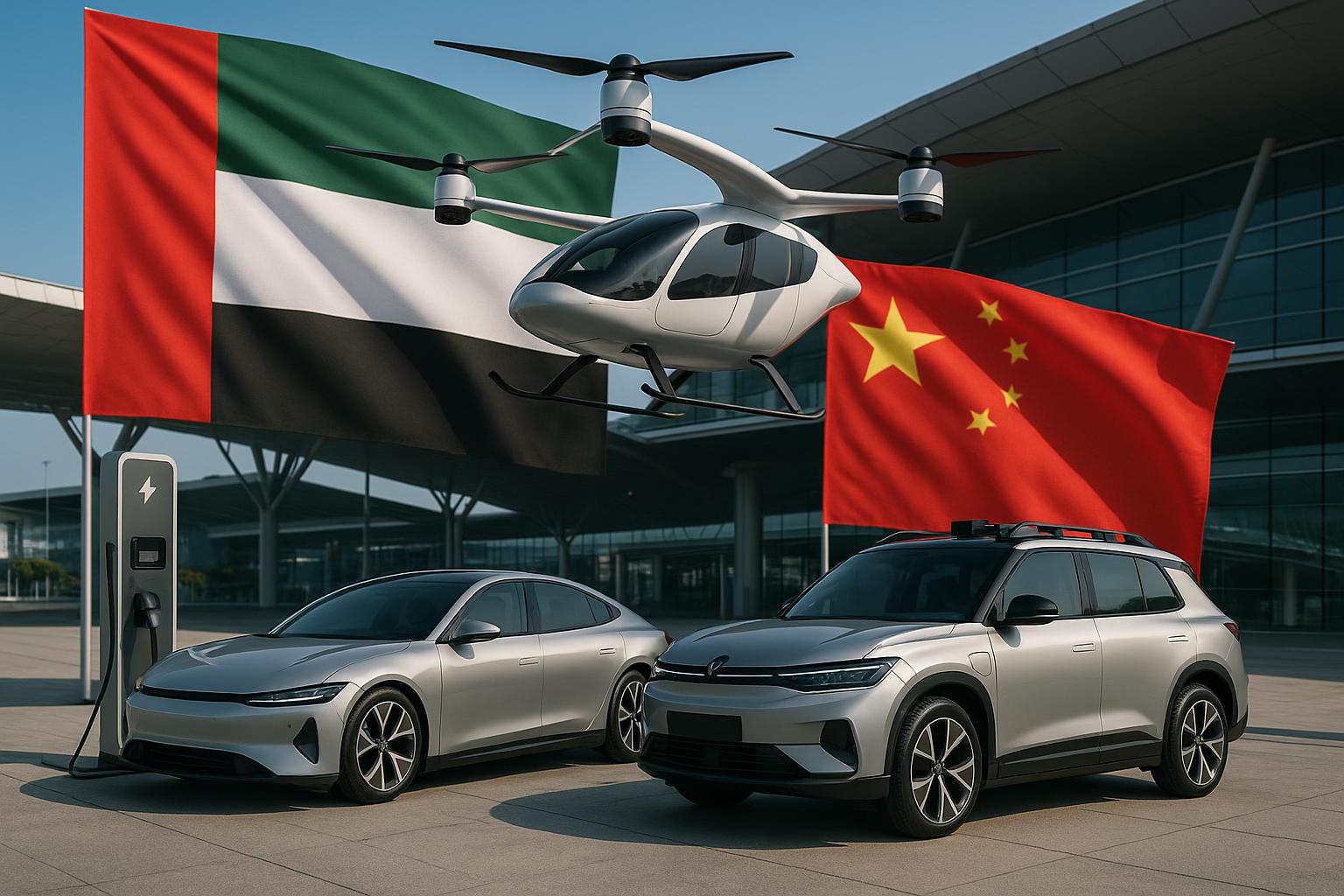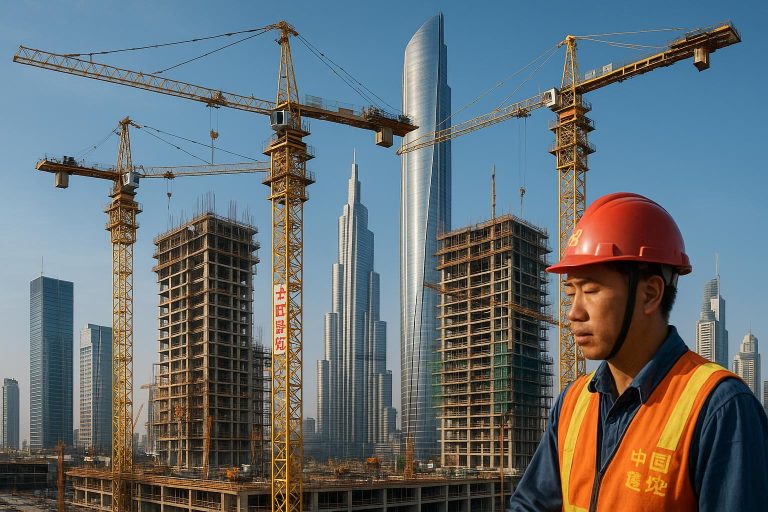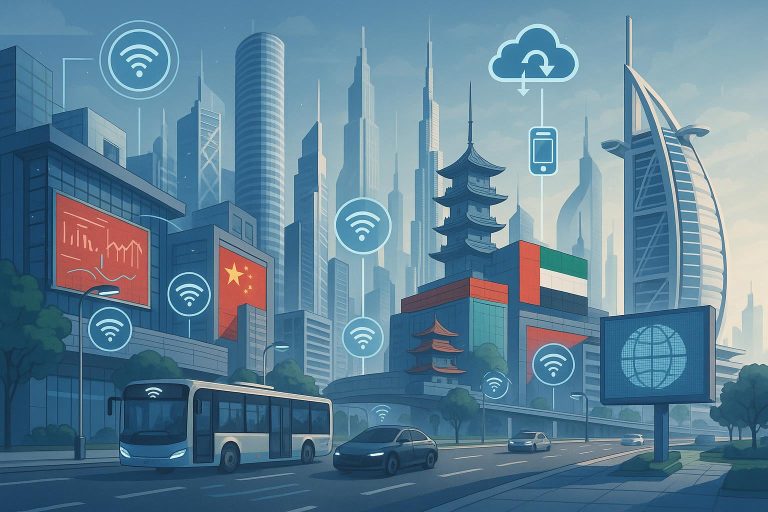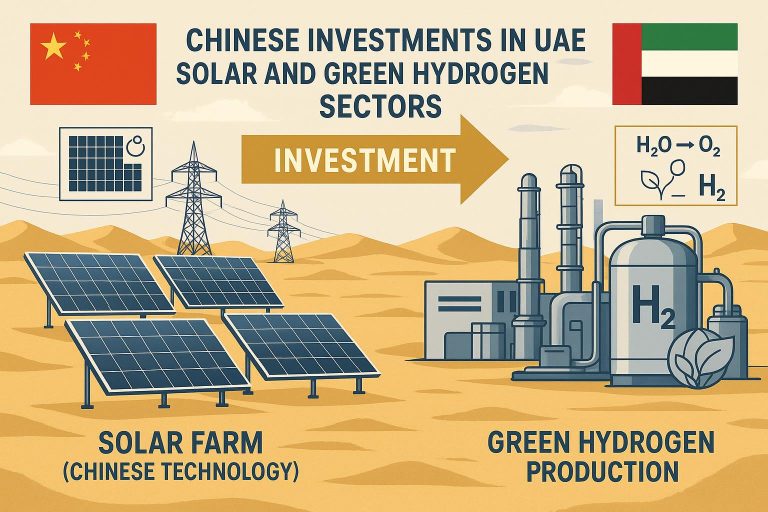The Next Mobility Frontier: Examining the UAE-China Joint Venture into Electric and Autonomous Transportation
Executive Summary
In an era of rapid technological advancement and a global drive towards sustainability, the United Arab Emirates (UAE) and China are forging a powerful partnership in electric and autonomous transportation. This article explores their strategic alignment and joint ventures, highlighting collaborative efforts to redefine urban mobility and logistics. Driven by a comprehensive strategic partnership established in 2018 and underpinned by significant bilateral trade reaching a record $101.8 billion in 2024, the UAE and China leverage the UAE’s visionary leadership and investment capacity with China’s technological prowess and manufacturing scale. The focus extends to cutting-edge areas like eVTOL aircraft and smart supply chain technologies, positioning both nations at the forefront of the next mobility revolution. While immense opportunities exist, the article also critically examines potential challenges, offering recommendations for sustained success in this dynamic frontier.
Introduction
The global transportation landscape is undergoing a profound transformation, propelled by innovations in electric vehicles (EVs), autonomous driving systems, and advanced urban air mobility solutions. At this critical juncture, the UAE and China have emerged as key collaborators, embarking on an ambitious journey to co-develop and implement future-forward mobility solutions. This partnership is deeply strategic, rooted in a shared vision for economic diversification, technological leadership, and sustainable development. The UAE, with its strategic geographic location and proactive investment in future industries, seeks to establish itself as a global hub for innovation. China, a global leader in EV manufacturing and AI development, aims to expand its technological footprint and foster international cooperation under initiatives like the Belt and Road. This article delves into the intricacies of their joint ventures in electric and autonomous transportation, analyzing the current state of cooperation, identifying strategic growth drivers, acknowledging critical challenges, and proposing a roadmap for future success.
The Current Landscape of Bilateral Cooperation
The UAE-China relationship has evolved into a robust partnership, characterized by significant economic ties and strategic alignment. This cooperation is underpinned by a Comprehensive Strategic Partnership established in 2018, fostering deep collaboration across various sectors. The economic foundation is exceptionally strong, with bilateral trade reaching an unprecedented $101.8 billion in 2024, an 800-fold growth since 1984 [1]. This positions the UAE as China’s largest export market in the Middle East and its second-largest trading partner in the region, while China remains the UAE’s largest trading partner. The presence of over 15,000 Chinese firms in the UAE underscores this economic integration, with UAE investments in China reaching $4.5 billion by the end of 2023, a 96% rise from the previous year [1].
The strategic framework includes the UAE-China Investment and Economic Cooperation Working Group and regular high-level diplomatic engagements. These mechanisms facilitate dialogue and cooperation, ensuring both nations effectively pursue shared objectives. While broader cooperation spans Energy & Clean Energy, Infrastructure & Logistics, Technology & AI, Trade & Free Zones, and Finance & Investment, the focus on mobility is a natural extension. The Belt and Road Initiative (BRI) has seen significant investment in the UAE, totaling $3.1 billion, bolstering infrastructure crucial for advanced transportation systems [1].
In mobility, the UAE’s strategic positioning as China’s Gulf gateway, exemplified by projects like the COSCO terminal at Khalifa Port and the China-UAE Industrial Capacity Zone, provides a vital logistical backbone. This infrastructure supports the movement of technology and expertise. The emphasis on Technology & AI cooperation and digital transformation initiatives directly feeds into the development of autonomous driving and smart city infrastructure. Furthermore, collaboration between JAFZA and Chinese free trade zones, along with DP World partnerships, streamlines supply chains for manufacturing and deploying electric vehicles. This comprehensive bilateral cooperation sets a strong precedent for joint ventures in electric and autonomous transportation.
Opportunities and Strategic Growth Drivers
The UAE-China joint venture in electric and autonomous transportation is propelled by a confluence of strategic opportunities and powerful growth drivers. The UAE’s ambitious vision for economic diversification, exemplified by initiatives like Dubai Future Foundation and Abu Dhabi’s Economic Vision 2030, positions it as a fertile ground for adopting and scaling advanced mobility solutions. Its commitment to becoming a global smart city hub, coupled with significant investment capacity, creates robust demand for innovative transportation technologies.
China brings unparalleled technological expertise, particularly in EV manufacturing, AI, and digital infrastructure. As the world’s largest EV market and a leader in autonomous driving research, China offers a mature ecosystem for development and deployment. The synergy between the UAE’s demand-side drivers and China’s supply-side capabilities forms a potent combination for accelerating progress.
Key sectors and recent developments highlight these opportunities:
- Aviation & Urban Air Mobility: The burgeoning field of urban air mobility is a significant driver. The UAE-China $1 billion deal for 350 flying taxis (eVTOL aircraft) represents a landmark commitment to revolutionizing urban travel [1]. This initiative showcases a shared vision for future transportation and positions the UAE as an early adopter and testing ground. The Emirates and Air China MoU for enhanced partnership signifies broader aviation collaboration, facilitating advanced air traffic management systems. The GCAA delegation to China for technical and commercial aviation collaboration further solidifies this strategic alignment, fostering knowledge exchange and regulatory harmonization [1].
- Logistics & Smart Supply Chains: The UAE’s role as a critical logistics hub is enhanced through smart supply chain technologies. JINGDONG Property’s first Middle East logistics hub in Dubai and JD.com’s implementation of smart supply chain technologies are pivotal [1]. These investments integrate AI-driven logistics, autonomous last-mile delivery, and smart fleet management. This collaboration leverages the UAE’s strategic geographical advantage and China’s advanced logistics technology to create highly efficient and automated supply chains.
- Artificial Intelligence & Digital Transformation: AI and digital transformation act as foundational growth drivers. The UAE-China $5 billion partnership for AI, renewable energy, and infrastructure underscores a shared commitment to leveraging AI across various sectors, including transportation [1]. Companies like G42 develop AI solutions for autonomous vehicles, intelligent traffic systems, and predictive maintenance. Digital Dubai’s exploration of AI and smart city technologies in Shenzhen further illustrates the UAE’s proactive approach to adopting Chinese innovations for smarter urban environments [1].
- Clean Energy Integration: The transition to electric transportation is inherently linked to clean energy. Existing cooperation in solar and wind power investments, including the Masdar-China Silk Road Fund MoU, provides a robust framework for powering the EV ecosystem [1]. This ensures the shift to EVs genuinely contributes to sustainability goals.
These opportunities are amplified by the BRI, which has channeled significant investments into the UAE, enhancing infrastructure and connectivity [1]. Regular high-level visits and a focus on new economy sectors create a dynamic environment for sustained growth. The geographic focus on Abu Dhabi as a primary investment hub and Dubai’s role in trade facilitation ensures these initiatives are strategically located to maximize impact.
Challenges and Critical Considerations
While the UAE-China joint venture in electric and autonomous transportation presents immense opportunities, addressing potential challenges is imperative for sustained success. Regulatory harmonization and standardization are primary considerations. Both nations possess distinct regulatory frameworks for vehicle safety, data privacy, and operational protocols. Reconciling these differences and establishing mutually recognized standards will be crucial for seamless technology transfer and market penetration.
Technological integration and interoperability are also critical. Ensuring diverse technological ecosystems can communicate and operate efficiently together is complex. This includes integrating charging infrastructure, autonomous driving software, and smart city platforms. Potential issues related to data protocols, cybersecurity, and intellectual property protection also warrant careful consideration. The sheer volume of data generated by autonomous vehicles necessitates robust data governance frameworks to safeguard privacy and ensure secure operations.
Furthermore, infrastructure development poses a substantial challenge. Widespread adoption of EVs requires a comprehensive network of charging stations, while eVTOL aircraft demand specialized vertiports and air traffic management systems. Scaling this infrastructure will require significant investment and meticulous planning. Finally, market acceptance and consumer behavior cannot be overlooked. Educating the public, building trust in autonomous technologies, and adapting to new modes of transportation will be vital for widespread adoption. Overcoming these challenges will require continuous dialogue, adaptive policy-making, and a commitment to collaborative problem-solving.
Case Study Spotlight: The UAE-China eVTOL Aircraft Deal
A compelling illustration of the UAE-China collaboration in advanced mobility is the groundbreaking $1 billion deal for 350 flying taxis (eVTOL aircraft) [1]. This agreement signifies a major leap towards integrating urban air mobility into the transportation ecosystem. The deal involves the procurement and deployment of Electric Vertical Take-Off and Landing (eVTOL) aircraft, designed to offer a new dimension of urban transport, bypassing ground congestion and significantly reducing travel times.
This initiative highlights the UAE’s proactive stance in adopting future technologies and China’s advanced capabilities in developing and manufacturing sophisticated aerospace and electric propulsion systems. The deployment of 350 eVTOL aircraft will not only transform urban commuting but also establish the UAE as a global pioneer in the commercialization of air taxis. This case study underscores the strategic intent to leverage Chinese technological innovation with UAE’s visionary urban planning and investment capital to create tangible solutions for the next generation of transportation.
Future Outlook and Strategic Recommendations
The future of the UAE-China joint venture in electric and autonomous transportation is poised for significant expansion, driven by continuous innovation and a shared commitment to sustainable mobility. The trajectory suggests a deepening of collaboration, moving beyond pilot projects to large-scale deployment and integration into national infrastructure. The UAE is likely to solidify its role as a global testbed for advanced mobility solutions, while China will continue to be a primary technology provider.
To ensure sustained success, the following recommendations are crucial:
- Establish a Joint Regulatory and Standardization Body: Collaborate on a dedicated working group to harmonize regulations, safety standards, and operational protocols for electric and autonomous vehicles, including eVTOLs. This would facilitate mutual recognition of certifications and create a predictable environment for investment.
- Invest in Integrated Infrastructure Development: Adopt a holistic approach to infrastructure, including smart grid solutions for EVs, dedicated digital infrastructure for V2X communication, and integrated urban air mobility hubs. Joint investment funds could accelerate these projects.
- Foster Research and Development Collaboration: Establish joint R&D centers to focus on specific regional challenges, such as autonomous driving in diverse weather conditions, battery technology optimization for extreme climates, and AI algorithms for smart traffic management. This would advance technology and build local expertise.
- Prioritize Cybersecurity and Data Governance: Develop a joint framework for data sharing, protection, and privacy compliance to build trust and ensure the secure operation of autonomous and electric fleets. This includes establishing protocols for incident response and threat intelligence sharing.
- Promote Public Awareness and Education: Launch comprehensive public awareness campaigns to educate citizens about the benefits, safety, and operational aspects of electric and autonomous transportation. Pilot programs and public demonstrations can help build confidence and foster a smoother transition.
Conclusion
The strategic partnership between the UAE and China in electric and autonomous transportation is a testament to their shared vision for a technologically advanced and sustainable future. Built upon a foundation of robust bilateral trade and a comprehensive strategic partnership, this collaboration leverages the UAE’s forward-thinking investment and China’s unparalleled technological and manufacturing prowess. From groundbreaking eVTOL aircraft deals to the integration of smart logistics and AI-driven solutions, both nations are actively shaping the next frontier of mobility. While challenges related to regulatory harmonization, technological integration, and infrastructure development exist, the commitment to collaborative problem-solving and strategic foresight positions this joint venture for enduring success. By continuing to foster innovation, address critical considerations, and implement strategic recommendations, the UAE and China are not only transforming their own transportation landscapes but also setting a powerful example for global cooperation in the pursuit of advanced, sustainable mobility solutions.
References
[1] UAE-China Bilateral Investment Research Findings (Provided Research Data)







